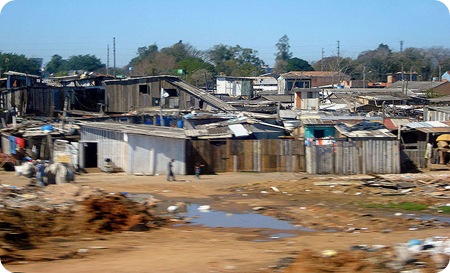Investigating and Presenting Problems in the Brazilian Favelas
[Photo source: http://commons.wikimedia.org/wiki/File:Favelas-portoalegre.jpg Author: Tetraktys]
Your overall tasks are to:
1) Find out about some of the problems experienced by people who arrive in the shanty towns in Brazil’s large cities
2) Create a photo movie to show these problems experienced by people.
These tasks should be completed over the course of one lesson and two home-works.
Part 1 – Researching some of the problems of life in the Favelas.
I recommend you use the lesson for this part – the photo video can be tackled as homework once you’ve finished the research.
Make notes of the conditions found in the favelas, and the problems which people experience as a result of living there. Make notes under the following headings:
- Housing
- Employment and Income
- Health
- Education
- Population
- Facilities and Infrastructure (Electricity and Water supplies, etc.)
- Transport
- Other
You will get your information from the following web sites.
1) A flash game called ‘Favela Kid’ (source: www.sportrelief.com). As you play this game, be sure to add notes under the headings above – be observant – don’t just rely on the text – what do the graphics show?
2) A flash animation showing how Brazilian shanty towns change over time (source: http://www.sln.org.uk/geography/)
3) Some more complex but informative text on favelas (source: http://www.macalester.edu/courses/geog61/chad/)
4) Your own research on favelas (start with a search engine such as Google). If you use any other websites, make sure you write them down in full.
Part 2 – Presenting the problems of life in the Favelas.
For this we are going to use an online photo animation website called animoto. This is an excellent resource for making photo based videos.
By the time you read this, your teacher will hopefully have contacted you with an animoto email address which you can use to sign up with.
UPDATE – Further details will be set on homework database – no need to start the animoto activity within the lesson itself – focus on Part 1 only.
| Print article | This entry was posted by James Penstone on September 29, 2009 at 9:30 am, and is filed under Geography, KS3 Geography. Follow any responses to this post through RSS 2.0. Responses are currently closed, but you can trackback from your own site. |
Comments are closed.



